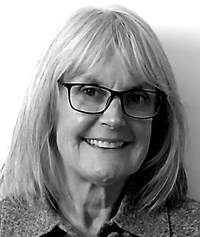
Journal Reviews
What are the non-inflammatory causes of a conductive loss?
This retrospective study looked at patients with an intact tympanic membrane with non-inflammatory causes – i.e. otitis media and cholesteotoma. They document their findings based on exploratory tympanotomy. They operated depending on the findings with either a stapedectomy or a...
Recovery rates in sudden sensorineural hearing loss
Sudden sensorineural hearing loss (SSNHL) is most commonly idiopathic, and is seen relatively frequently in ENT practice. Recovery spans a period of around 1-2 months, and ultimate outcomes are highly variable, from complete recovery to no detectable hearing. Although the...
New diagnostic criteria for Ménière’s disease – an international consensus
Most readers are familiar with the American Academy diagnostic criteria for Ménière’s disease (MD) but a significant minority will be aware of other criteria from Japan and Korea. This new effort is a collaboration between these three bodies and the...
Leptin has no role in idiopathic sudden sensorineural hearing loss
This paper from Turkey claims to be the first study dealing with the relationship between leptin and idiopathic sudden sensorineural hearing loss (ISSHL). I remember leptin being a fashionable topic in obesity research, when leptin deficiency was thought to be...
Experience of the Sophono transcutaneous bone conduction system
This article is a frank discussion of the authors’ experience implanting these devices. The principle of the device is surgical implantation of a bilobed magnet within a bony well in the cranium (similar position to BAHA). The implant is a...
Hearing loss in the young and self-esteem
How can those involved in the care of children with hearing loss identify those at risk of low self-esteem? This study provides some guidance. Overall differences from hearing peers in terms of communication skills, physical appearance and social maturity place...
Review: Cochlear Implantation in SSD?
Contra lateral routing of signals (CROS) using hearing aids and bone conduction devices has been the conventionally accepted modality for the treatment of single sided hearing impairment. The CROS hearing aid has been found to improve speech understanding in noise,...
Cochlear implantation in Ménière’s disease
This was a Belgian retrospective study of seven patients with Ménière’s disease who underwent cochlear implantation. All patients had bilateral severe to profound hearing loss and all met AAO-HNS criteria for Ménière’s disease. Follow-up for patients ranged from six months...
Frequency Compression – is there a benefit?
The goal of this study was to investigate whether frequency compression (FC) hearing aids provide more benefit than conventional hearing aids. Twelve experienced hearing aid users 65-84 years of age with moderate to severe high frequency hearing loss wore the...
Cochlear implantation techniques
This issue concentrates on the advancement in techniques within the field of implant otology starting with cochlear implantation. Here it is sub-divided into indications, candidacy (including full pre-operative testing and investigations), surgical technique and outcomes for both adults and children....
Inflammation associated with presbyacusis
Inflammaging and presbyacusis is a topic that few audiologists consider in their daily clinical routine due to lack of training in this area. Inflammaging is a chronic state of inflammation present throughout the body. The classic 1965 work by Rosen...
Viral induced hearing loss
Viruses are a common cause of hearing loss both in children and adults. This article provides a good review of the viral causes of hearing loss and can be regarded as an essential read. The authors divide the viruses into...
















